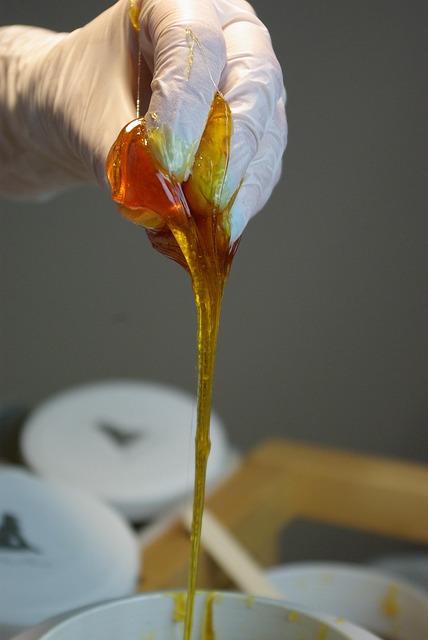Understanding common clothing stains is crucial for effective stain removal. Identify substances like food, drink, ink, or grease and treat fresh spills with cold water and detergent to prevent setting. Choose appropriate cleaning agents based on stain types. Use pre-treatments, soft-bristled brushes, and protective gloves for better results. Home remedies like vinegar and baking soda offer eco-friendly alternatives. For delicate fabrics, consider professional stain removal services. Prevent future stains through swift treatment, proper care labels, protective gear, and regular cleaning routines. Shift towards natural, eco-friendly stain removal products to reduce environmental impact.
Looking to banish those stubborn stains from your clothes? This comprehensive guide unveils the secrets to effective stain removal. From understanding the science behind common clothing stains to exploring eco-friendly solutions, we’ve got you covered. Discover essential tools, powerful pre-treatment techniques, and natural home remedies. Learn when professional help is necessary and how to prevent future stains from setting in. Get ready to tackle laundry day with newfound confidence!
Understanding Common Clothing Stains

Understanding Common Clothing Stains is the first step in effective stain removal. From food and drink spills to ink and grease, various substances can leave behind stubborn marks on our garments. Knowing what you’re dealing with is crucial for selecting the right cleaning method. For instance, treating a fresh coffee stain promptly with cold water and a mild detergent can prevent it from setting, while an older ink stain might require a different approach altogether, such as using rubbing alcohol or specialized stain remover products designed for specific types of marks.
Identifying the type of stain is also key to choosing the right cleaning agents and techniques. Common culprits include grass stains, dirt and mud, blood, and various chemical residues from household cleaners or industrial substances. Each has its unique characteristics and requires tailored care. By understanding these common issues, you can be better prepared to tackle stains head-on, ensuring your clothes look as good as new with effective stain removal techniques.
Essential Tools for Stain Removal

When it comes to effective stain removal, having the right tools is essential. First and foremost, a good quality stain remover or pre-wash treatment is a must-have in your laundry arsenal. These products are designed to break down and remove stubborn stains at their source, making them a game-changer for delicate fabrics and hard-to-reach marks. Whether it’s a spill from your morning coffee or a juicy fruit snack, a reliable stain remover can make quick work of what seems like an unsalvageable mess.
Complementing these products are various tools that aid in the stain removal process. Soft-bristled brushes are ideal for gently scrubbing away stains on fabrics without causing further damage. For more stubborn cases, a clean, old toothbrush can be used to apply stain remover directly to hard-to-reach areas. Additionally, plastic or latex gloves protect your hands while treating stains, ensuring you can handle any soiled items with ease and confidence. Having these essential tools readily available will make tackling stains an efficient and stress-free task.
Pre-Treatment Techniques to Enhance Cleaning

Before you even start washing your clothes, pre-treating stains can significantly enhance their removal. Begin by identifying and categorizing the type of stain present, as different substances require unique approaches. For instance, fresh spills like grape juice or coffee can be treated with a cold water rinse to dilute and flush out the stain.
For dried-in stains, pre-soaking in a mixture of warm water and stain remover is an effective technique. This step softens the dirt, allowing cleaning solutions to penetrate deeper into the fabric fibers. Additionally, gently rubbing the affected area with a soft-bristled brush can help loosen debris, making it easier for the cleaning agent to work its magic during the wash cycle, ultimately improving your overall stain removal efforts.
Home Remedies for Effective Stain Elimination

Home remedies offer a natural and cost-effective approach to stain removal, providing an eco-friendly alternative to commercial products. Vinegar, for instance, is a popular choice; its acetic acid properties help break down and dissolve various stains, from grease and wine to ink and coffee. Soak the stained area in a mixture of equal parts vinegar and warm water for 30 minutes, then gently rub with a soft-bristled brush or cloth before washing as usual. Baking soda is another versatile ingredient; it acts as an absorbent, drawing out dirt and grime while also neutralizing odors. Create a paste by mixing baking soda with a small amount of water, apply it to the stain, let it sit for 15 minutes, then blot dry and wash.
These simple, household items are not only effective but also safe for sensitive fabrics, making them ideal solutions for those who prefer chemical-free cleaning methods. Additionally, they are convenient and easily accessible, allowing you to tackle stains promptly without needing to run to the store.
When to Seek Professional Help

If simple home remedies and over-the-counter stain removal products fail to lift stubborn stains from your clothes, it might be time to consider professional help. Professional stain removal services are equipped with specialized equipment and advanced techniques tailored for various fabric types and complex stains. They understand that not all stains respond to the same treatment, so they offer customized solutions.
Seeking expert assistance is particularly recommended for delicate fabrics like silk or wool, antique garments, or items of sentimental value. These require meticulous care to prevent further damage during the cleaning process. Professional cleaners also specialize in handling hard-to-remove stains caused by food, wine, ink, or pet accidents, ensuring that your clothes are restored to their original condition without leaving any residue or damaging the fibers.
Preventing Future Stains

Preventing future stains is an essential aspect of effective stain removal and maintaining your clothes in top condition. Regular care and attention can significantly reduce the occurrence of stubborn marks. One simple yet effective method is to act quickly when a stain appears; the faster you treat it, the better the chances of removing it completely. Always check the care label on your garments for specific instructions, as different fabrics have unique requirements.
Additionally, adopting preventive measures like wearing protective gear during staining activities, such as cooking or gardening, can save you from difficult clean-ups later. Using stain-resistant finishes on clothing, especially for everyday wear, is another clever approach. These treatments create a barrier between the fabric and stains, making them easier to wipe away. Remember, regular cleaning routines, including washing clothes separately based on color and treating them with suitable detergents, will go a long way in keeping your wardrobe stain-free.
Environmental Impact of Stain Removal Products

Many conventional stain removal products contain chemicals that can be harmful to both your clothes and the environment. These chemicals often leave residues on fabrics, potentially causing irritation or damage over time. Moreover, when washed down the drain, they can pollute water sources and harm aquatic life.
As consumers become more conscious of sustainability, there’s a growing demand for eco-friendly stain removal alternatives. Natural ingredients like baking soda, vinegar, and plant-based enzymes offer effective cleaning without the environmental footprint. Opting for these methods not only reduces pollution but also promotes a healthier and safer laundry routine.
